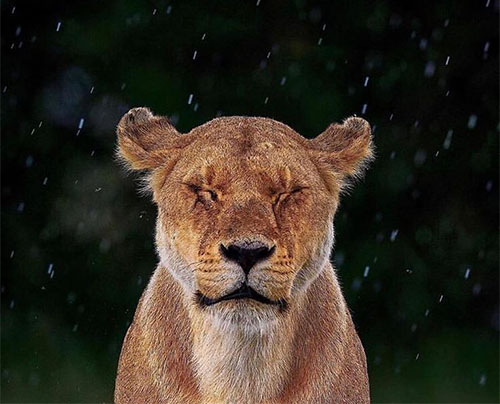Wildlife and the rain
Is there still a chance of seeing animals in the rain?
There is always a chance of seeing various animals while on a game drive no matter what.

“Is it going to rain?” This is a question that we often get asked by guests before departing on our afternoon game drive when there are ominous, dark clouds looming on the horizon. And this is usually followed by.
“Is there still a chance of seeing animals in the rain?” Now as we know, there is always a chance of seeing various animals while on a game drive no matter what. I have however found that, depending on the imminent weather conditions, the likelihood of seeing some species of game is higher (or lower) than others.
First things first, atmospheric (barometric) pressure can be defined as the amount of downward force that the atmosphere exerts within a specific air column. The air pressure before and after a frontal system (storm) differs with low pressure preceding and leading up to a rain storm and high pressure proceeding it.
There is often a hive of animal activity prior to a storm coming. Giraffes and other herbivores are out feeding and drinking, predators such as lions and leopards actively hunting (even if they have recently fed), and birds fly about looking for food before seeking out cover. These animals are most likely able to sense the drop in barometric pressure and are actively preparing for a period of bad weather where moving about may not be as easy.
Predators are able to use their sense of smell more effectively during periods of low atmospheric pressure as the scent of potential food travels further in these conditions and lasts longer by hugging the ground as the pressure continues to drop. These predators, as well as many other species (humans included), may also be able to smell rain long before it has arrived.
Then comes the rain. Many animals choose to seek refuge during a big downpour and hunker down under the cover of vegetation. Rainy, windy conditions do however favour predators when hunting as their scent is masked and it is harder for prey species to hear them as the sound of the raindrops falling muffles out the sound of their approach. And so if they have been unsuccessful in their attempts to hunt prior to the rain, they may very well try again during the storm. One of my favourite animals to see during rain are tortoises moving about frantically (well – as frantically as a tortoise can move…) in search of fresh puddles of water from which to drink.
My favourite scenario is after the rain has come. I feel like the jubilation and relief amongst many of the animals are tangible. Zebra foals frolicking about, birds bathing in rainwater puddles and warthogs covering themselves in the mud are just a few examples of what you can see the morning after a night of rain. Insects are abundant after rain and there will often be emergences of flying termite alates that create a hive of activity among insect-eating birds. The rain would also have washed away the scent of territorial animals and so these species, such as leopards, lions and rhinos are often on a mission to re-establish their claim on their territory
All of the above scenarios are theoretically what we are most likely to see playing out in the various weather conditions however what I have described doesn’t always apply exactly as I have explained. It is merely what we tend to observe. Now that Summer is upon us and rain is on the horizon (literally), I hope that you have a slightly better idea of what to expect before, during and after a storm!
Thank you to Robert Ball from Londolozi for this acticle.
Please contact us and we will arrange a dream safari for you to experience - An Experience is Priceless
